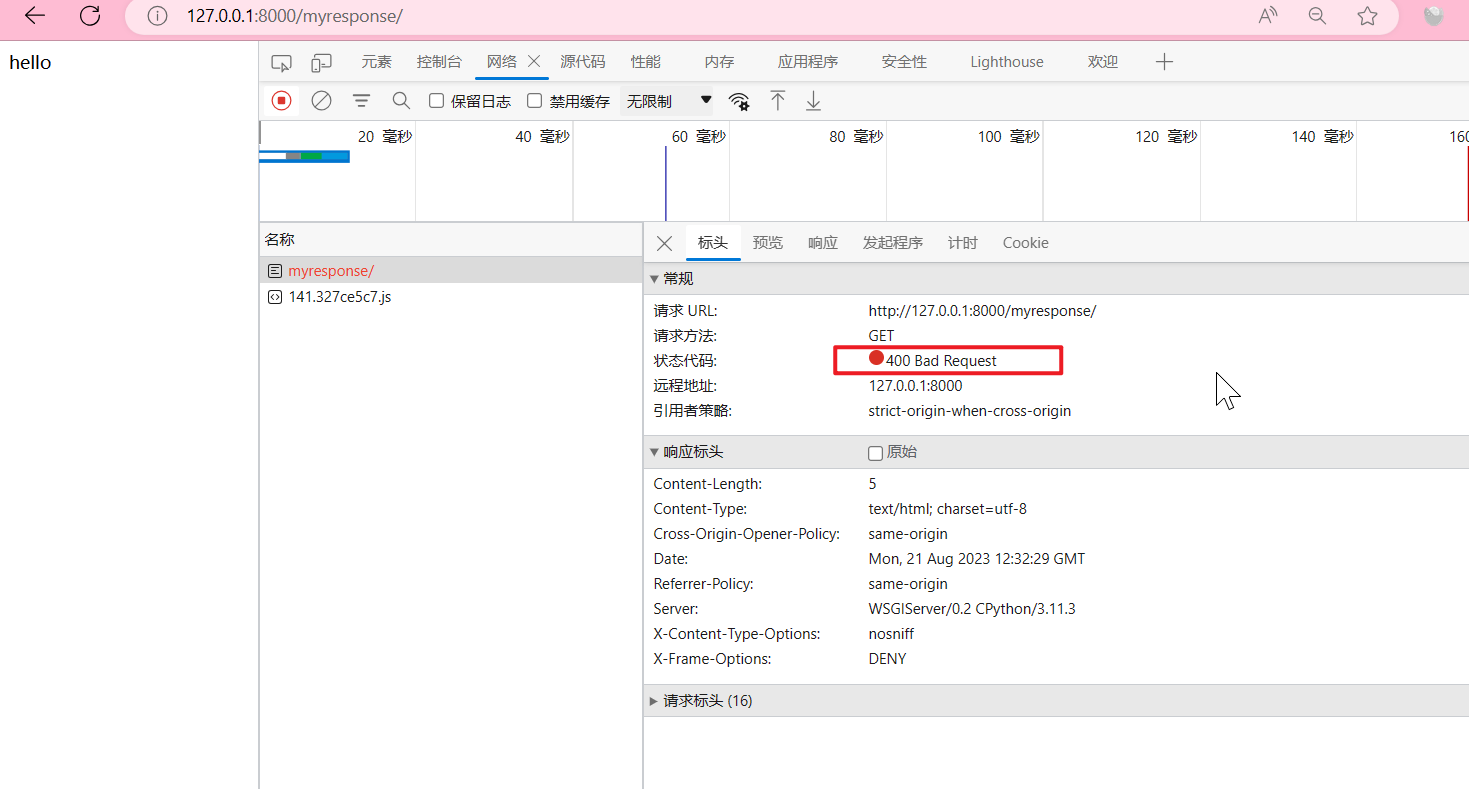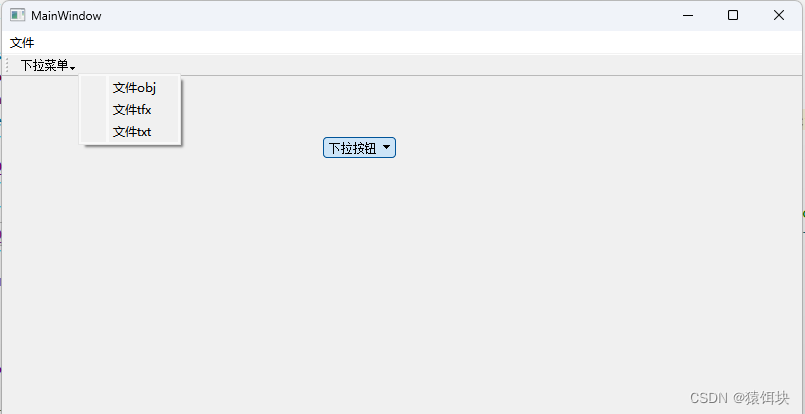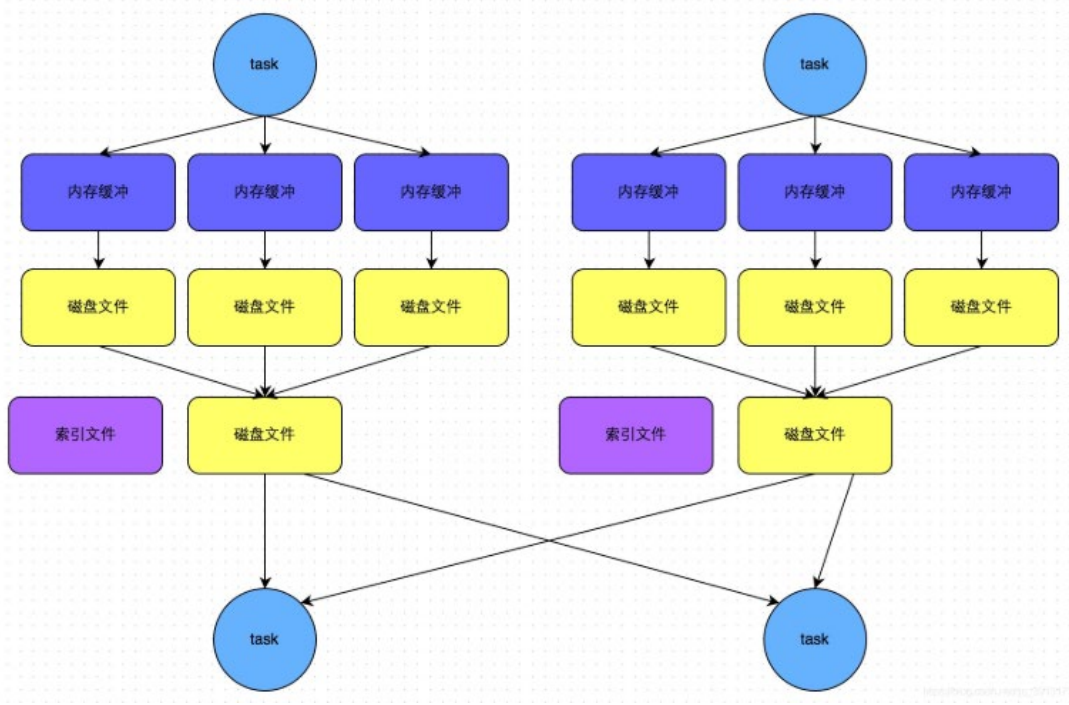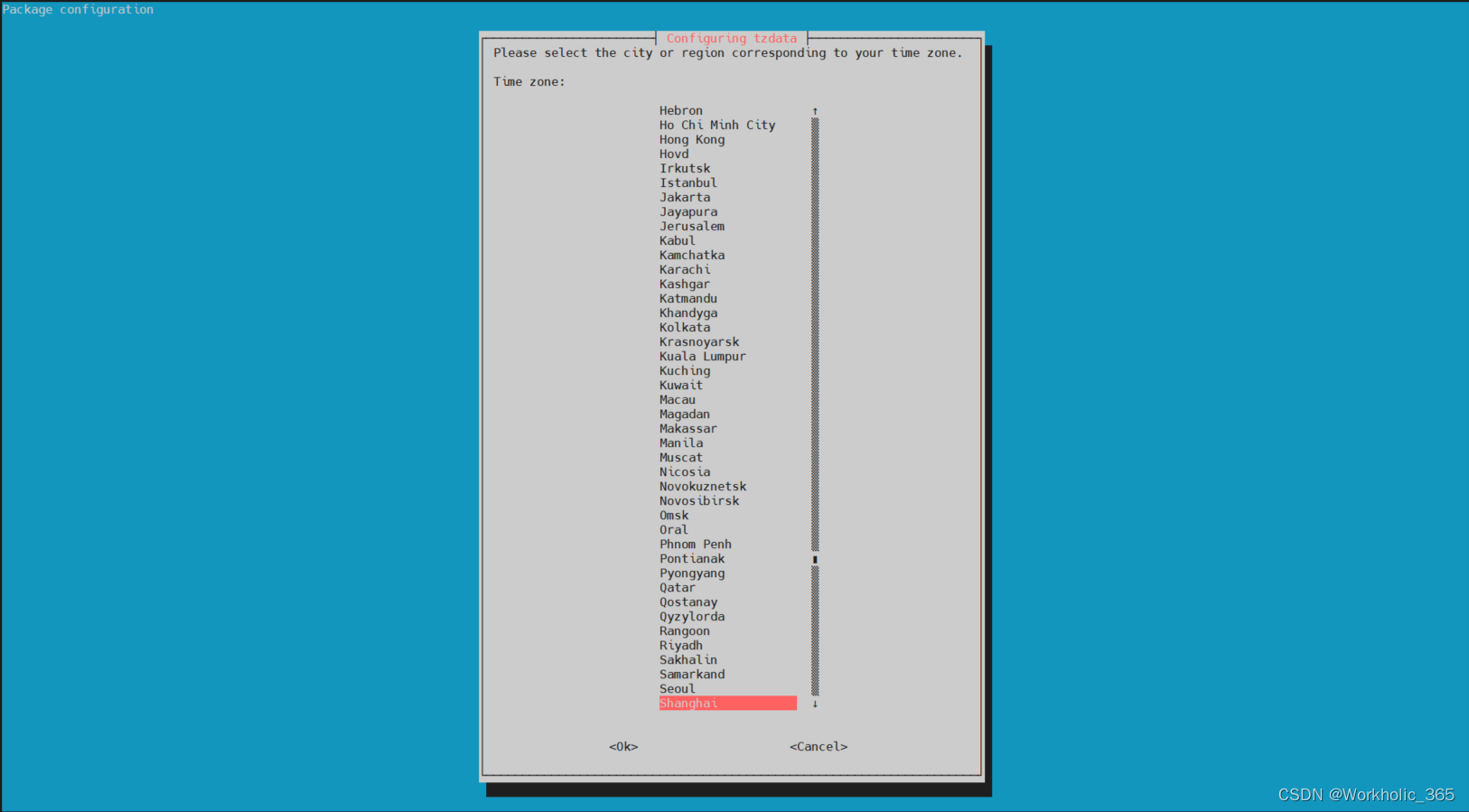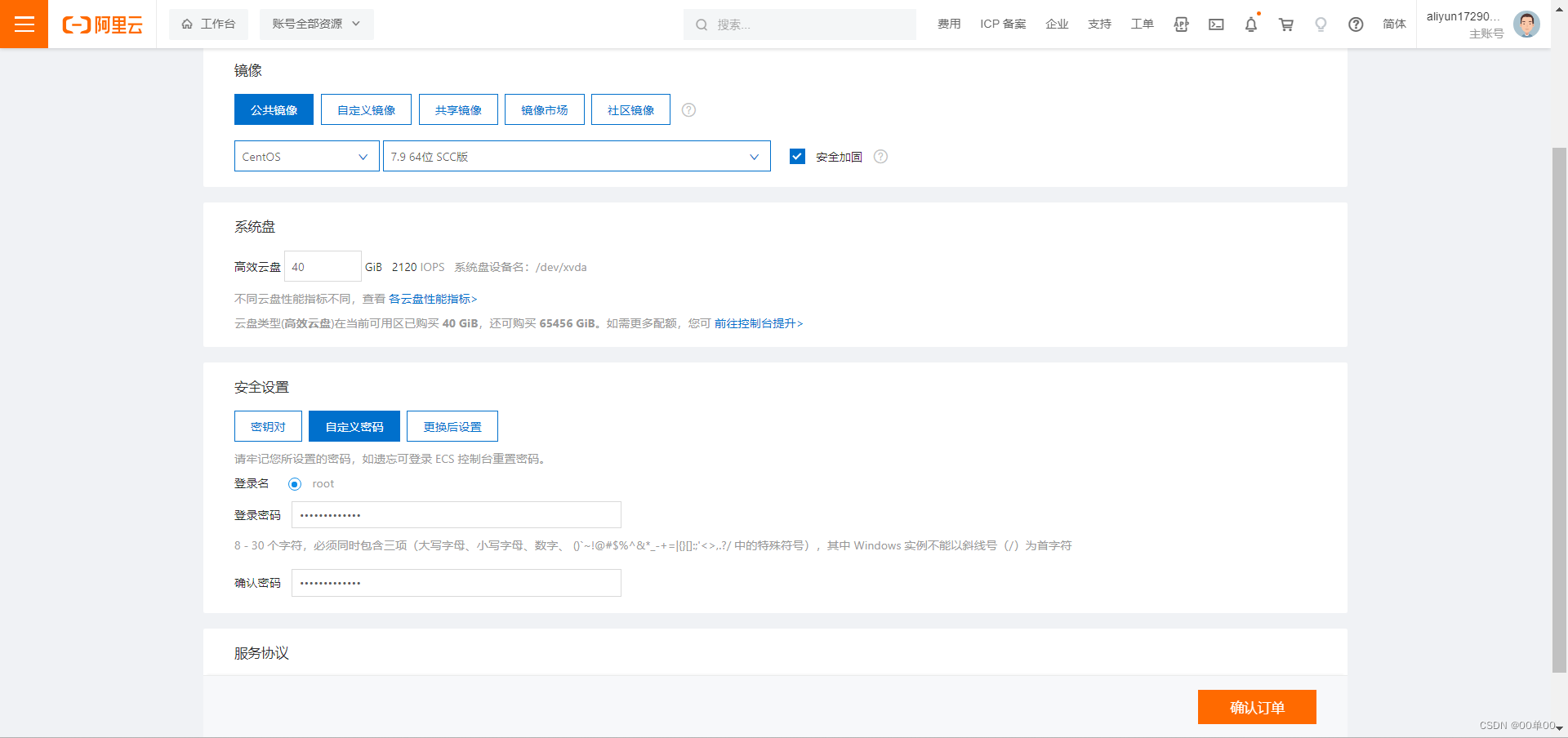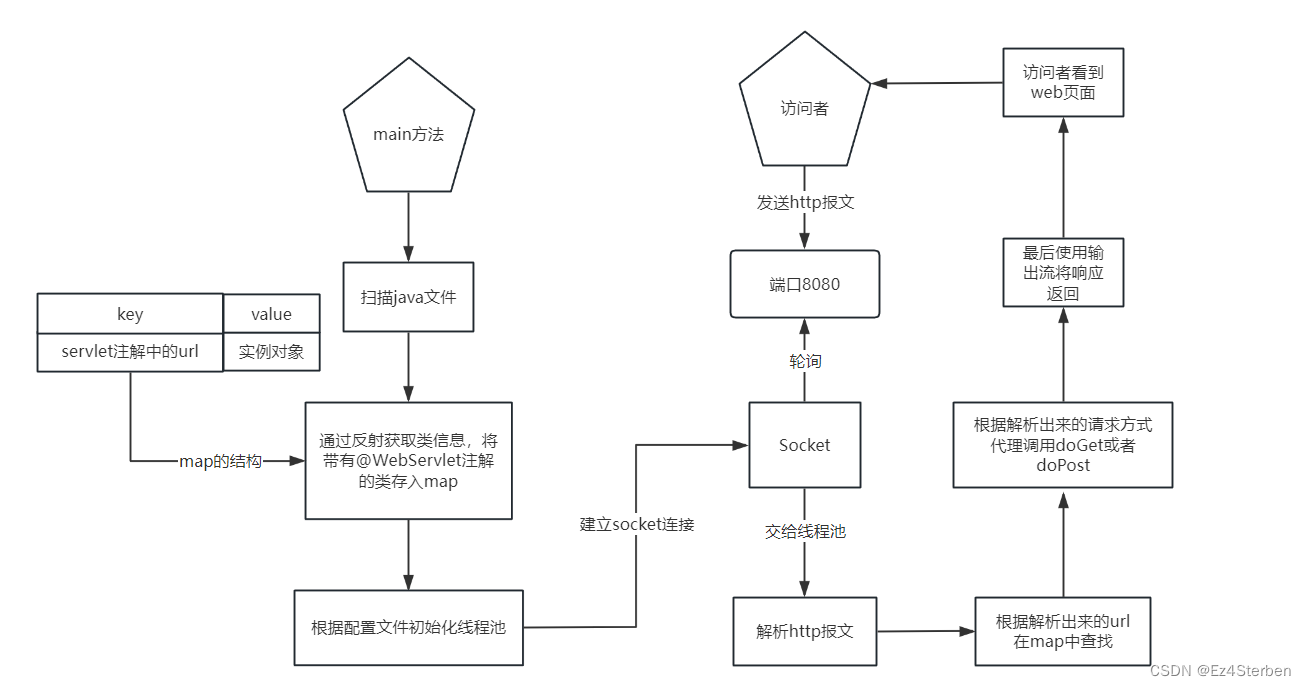[oneAPI] 基于BERT预训练模型的SQuAD问答任务
- Intel® Optimization for PyTorch and Intel® DevCloud for oneAPI
- 基于BERT预训练模型的SQuAD问答任务
- 语料介绍
- 数据下载
- 构建
- 模型
- 结果
- 参考资料
比赛:https://marketing.csdn.net/p/f3e44fbfe46c465f4d9d6c23e38e0517
Intel® DevCloud for oneAPI:https://devcloud.intel.com/oneapi/get_started/aiAnalyticsToolkitSamples/
Intel® Optimization for PyTorch and Intel® DevCloud for oneAPI
我们在Intel® DevCloud for oneAPI平台上构建了实验环境,充分发挥其完全虚拟化的优势。更具影响力的是,我们充分发挥了Intel® Optimization for PyTorch的强大功能,将其无缝融入我们的PyTorch模型中。这项优化策略的成功应用,不仅进一步提升了我们实验的效果,也显著加速了模型的训练和推断过程。通过这种深度融合硬件和软件的精妙设计,我们不仅释放了硬件的潜力,还为我们的研究和实验带来了新的可能性。这一系列的努力为人工智能领域的创新开辟了更广阔的前景。

基于BERT预训练模型的SQuAD问答任务
SQuAD(Stanford Question Answering Dataset)是一个广泛使用的英文问答数据集,由斯坦福大学发布。它旨在促进机器阅读理解研究,对于理解文本内容并从中提取答案非常有价值。SQuAD数据集的主要特点是,每篇文章都有一系列问题,以及与每个问题相关的精确答案片段,这些答案是从原始文章中抽取的。
在SQuAD英文问答任务中,模型需要读取文章、理解上下文,并从中准确提取出问题的答案。该任务对于开发强大的阅读理解模型和问答系统具有重要的意义。
SQuAD英文问答任务的特点和价值:
- 真实性: SQuAD数据集的文章和问题都来自真实的文本,确保了任务的实际应用性。
- 机器阅读理解: 任务要求模型阅读文章,理解其内容,然后从中定位和提取出准确的答案,这是机器阅读理解的典型应用。
在SQuAD英文问答任务中,Bert(Bidirectional Encoder Representations from Transformers)是一种重要的模型,它通过预训练语言表示,在问答系统和信息提取领域取得了显著成就。
Bert模型的实用设计和价值影响:
- 双向上下文理解: Bert模型具备双向上下文理解能力,可以同时考虑文本的前后信息,从而更好地捕捉单词之间的关系。
- 预训练与微调: Bert在大规模语料库上进行预训练,学习了丰富的语言表示,然后通过微调在特定任务上表现出色,适应任务需求。
语料介绍
所谓问题回答指的就是同时给模型输入一个问题和一段描述,最后需要模型从给定的描述中预测出答案所在的位置(text span)。例如:
描述:苏轼是北宋著名的文学家与政治家,眉州眉山人。
问题:苏轼是哪里人?
标签:眉州眉山人
对于这样一个问题问答任务我们应该怎么来构建这个模型呢?
在做这个任务之前首先需要明白的就是:①最终问题的答案一定是在给定的描述中;②问题的答案一定是一段连续的字符。例如对于上面的描述,如果给出问题“苏轼生活在什么年代他是哪里人?”,那么模型并不会给出“北宋”和“眉州眉山人”这两个分离的答案,最好的情况下便是给出“北宋著名的文学家与政治家,眉州眉山人”这一个答案。
在有了这两个限制条件后,对于这类问答任务的本质也就变成了需要让模型预测得到答案在描述中的起始位置(start position)以及它的结束位置(end position)。所以,问题最终又变成了如何在BERT模型的基础上再构建一个分类器来对BERT最后一层输出的每个Token进行分类,判断它们是否属于start position或者是end position。
数据下载
由于没有找到类似的高质量中文数据集,所以在这里使用到的也是论文中所提到的SQuAD(The Stanford Question Answering Dataset 1.1 )数据集,即给定一个问题和描述需要模型从描述中找出答案的起止位置。
构建
对于数据预处理部分我们可以继续继承之前文本分类处理的这个类LoadSingleSentenceClassificationDataset,然后再稍微修改其中的部分方法即可。
import torch
from torch.utils.data import DataLoader
from tqdm import tqdm
import pandas as pd
import json
import logging
import os
from sklearn.model_selection import train_test_split
import collections
import six
class Vocab:
"""
根据本地的vocab文件,构造一个词表
vocab = Vocab()
print(vocab.itos) # 得到一个列表,返回词表中的每一个词;
print(vocab.itos[2]) # 通过索引返回得到词表中对应的词;
print(vocab.stoi) # 得到一个字典,返回词表中每个词的索引;
print(vocab.stoi['我']) # 通过单词返回得到词表中对应的索引
print(len(vocab)) # 返回词表长度
"""
UNK = '[UNK]'
def __init__(self, vocab_path):
self.stoi = {}
self.itos = []
with open(vocab_path, 'r', encoding='utf-8') as f:
for i, word in enumerate(f):
w = word.strip('\n')
self.stoi[w] = i
self.itos.append(w)
def __getitem__(self, token):
return self.stoi.get(token, self.stoi.get(Vocab.UNK))
def __len__(self):
return len(self.itos)
def build_vocab(vocab_path):
"""
vocab = Vocab()
print(vocab.itos) # 得到一个列表,返回词表中的每一个词;
print(vocab.itos[2]) # 通过索引返回得到词表中对应的词;
print(vocab.stoi) # 得到一个字典,返回词表中每个词的索引;
print(vocab.stoi['我']) # 通过单词返回得到词表中对应的索引
"""
return Vocab(vocab_path)
def pad_sequence(sequences, batch_first=False, max_len=None, padding_value=0):
"""
对一个List中的元素进行padding
Pad a list of variable length Tensors with ``padding_value``
a = torch.ones(25)
b = torch.ones(22)
c = torch.ones(15)
pad_sequence([a, b, c],max_len=None).size()
torch.Size([25, 3])
sequences:
batch_first: 是否把batch_size放到第一个维度
padding_value:
max_len :
当max_len = 50时,表示以某个固定长度对样本进行padding,多余的截掉;
当max_len=None是,表示以当前batch中最长样本的长度对其它进行padding;
Returns:
"""
if max_len is None:
max_len = max([s.size(0) for s in sequences])
out_tensors = []
for tensor in sequences:
if tensor.size(0) < max_len:
tensor = torch.cat([tensor, torch.tensor([padding_value] * (max_len - tensor.size(0)))], dim=0)
else:
tensor = tensor[:max_len]
out_tensors.append(tensor)
out_tensors = torch.stack(out_tensors, dim=1)
if batch_first:
return out_tensors.transpose(0, 1)
return out_tensors
def cache(func):
"""
本修饰器的作用是将SQuAD数据集中data_process()方法处理后的结果进行缓存,下次使用时可直接载入!
:param func:
:return:
"""
def wrapper(*args, **kwargs):
filepath = kwargs['filepath']
postfix = kwargs['postfix']
data_path = filepath.split('.')[0] + '_' + postfix + '.pt'
if not os.path.exists(data_path):
logging.info(f"缓存文件 {data_path} 不存在,重新处理并缓存!")
data = func(*args, **kwargs)
with open(data_path, 'wb') as f:
torch.save(data, f)
else:
logging.info(f"缓存文件 {data_path} 存在,直接载入缓存文件!")
with open(data_path, 'rb') as f:
data = torch.load(f)
return data
return wrapper
class LoadSingleSentenceClassificationDataset:
def __init__(self,
vocab_path='./vocab.txt', #
tokenizer=None,
batch_size=32,
max_sen_len=None,
split_sep='\n',
max_position_embeddings=512,
pad_index=0,
is_sample_shuffle=True
):
"""
:param vocab_path: 本地词表vocab.txt的路径
:param tokenizer:
:param batch_size:
:param max_sen_len: 在对每个batch进行处理时的配置;
当max_sen_len = None时,即以每个batch中最长样本长度为标准,对其它进行padding
当max_sen_len = 'same'时,以整个数据集中最长样本为标准,对其它进行padding
当max_sen_len = 50, 表示以某个固定长度符样本进行padding,多余的截掉;
:param split_sep: 文本和标签之前的分隔符,默认为'\t'
:param max_position_embeddings: 指定最大样本长度,超过这个长度的部分将本截取掉
:param is_sample_shuffle: 是否打乱训练集样本(只针对训练集)
在后续构造DataLoader时,验证集和测试集均指定为了固定顺序(即不进行打乱),修改程序时请勿进行打乱
因为当shuffle为True时,每次通过for循环遍历data_iter时样本的顺序都不一样,这会导致在模型预测时
返回的标签顺序与原始的顺序不一样,不方便处理。
"""
self.tokenizer = tokenizer
self.vocab = build_vocab(vocab_path)
self.PAD_IDX = pad_index
self.SEP_IDX = self.vocab['[SEP]']
self.CLS_IDX = self.vocab['[CLS]']
# self.UNK_IDX = '[UNK]'
self.batch_size = batch_size
self.split_sep = split_sep
self.max_position_embeddings = max_position_embeddings
if isinstance(max_sen_len, int) and max_sen_len > max_position_embeddings:
max_sen_len = max_position_embeddings
self.max_sen_len = max_sen_len
self.is_sample_shuffle = is_sample_shuffle
@cache
def data_process(self, filepath, postfix='cache'):
"""
将每一句话中的每一个词根据字典转换成索引的形式,同时返回所有样本中最长样本的长度
:param filepath: 数据集路径
:return:
"""
raw_iter = open(filepath, encoding="utf8").readlines()
data = []
max_len = 0
for raw in tqdm(raw_iter, ncols=80):
line = raw.rstrip("\n").split(self.split_sep)
s, l = line[0], line[1]
tmp = [self.CLS_IDX] + [self.vocab[token] for token in self.tokenizer(s)]
if len(tmp) > self.max_position_embeddings - 1:
tmp = tmp[:self.max_position_embeddings - 1] # BERT预训练模型只取前512个字符
tmp += [self.SEP_IDX]
tensor_ = torch.tensor(tmp, dtype=torch.long)
l = torch.tensor(int(l), dtype=torch.long)
max_len = max(max_len, tensor_.size(0))
data.append((tensor_, l))
return data, max_len
def load_train_val_test_data(self, train_file_path=None,
val_file_path=None,
test_file_path=None,
only_test=False):
postfix = str(self.max_sen_len)
test_data, _ = self.data_process(filepath=test_file_path, postfix=postfix)
test_iter = DataLoader(test_data, batch_size=self.batch_size,
shuffle=False, collate_fn=self.generate_batch)
if only_test:
return test_iter
train_data, max_sen_len = self.data_process(filepath=train_file_path,
postfix=postfix) # 得到处理好的所有样本
if self.max_sen_len == 'same':
self.max_sen_len = max_sen_len
val_data, _ = self.data_process(filepath=val_file_path,
postfix=postfix)
train_iter = DataLoader(train_data, batch_size=self.batch_size, # 构造DataLoader
shuffle=self.is_sample_shuffle, collate_fn=self.generate_batch)
val_iter = DataLoader(val_data, batch_size=self.batch_size,
shuffle=False, collate_fn=self.generate_batch)
return train_iter, test_iter, val_iter
def generate_batch(self, data_batch):
batch_sentence, batch_label = [], []
for (sen, label) in data_batch: # 开始对一个batch中的每一个样本进行处理。
batch_sentence.append(sen)
batch_label.append(label)
batch_sentence = pad_sequence(batch_sentence, # [batch_size,max_len]
padding_value=self.PAD_IDX,
batch_first=False,
max_len=self.max_sen_len)
batch_label = torch.tensor(batch_label, dtype=torch.long)
return batch_sentence, batch_label
class LoadSQuADQuestionAnsweringDataset(LoadSingleSentenceClassificationDataset):
"""
Args:
doc_stride: When splitting up a long document into chunks, how much stride to
take between chunks.
当上下文过长时,按滑动窗口进行移动,doc_stride表示每次移动的距离
max_query_length: The maximum number of tokens for the question. Questions longer than
this will be truncated to this length.
限定问题的最大长度,过长时截断
n_best_size: 对预测出的答案近后处理时,选取的候选答案数量
max_answer_length: 在对候选进行筛选时,对答案最大长度的限制
"""
def __init__(self, doc_stride=64,
max_query_length=64,
n_best_size=20,
max_answer_length=30,
**kwargs):
super(LoadSQuADQuestionAnsweringDataset, self).__init__(**kwargs)
self.doc_stride = doc_stride
self.max_query_length = max_query_length
self.n_best_size = n_best_size
self.max_answer_length = max_answer_length
@staticmethod
def get_format_text_and_word_offset(text):
"""
格式化原始输入的文本(去除多个空格),同时得到每个字符所属的元素(单词)的位置
这样,根据原始数据集中所给出的起始index(answer_start)就能立马判定它在列表中的位置。
:param text:
:return:
e.g.
text = "Architecturally, the school has a Catholic character. "
return:['Architecturally,', 'the', 'school', 'has', 'a', 'Catholic', 'character.'],
[0, 0, 0, 0, 0, 0, 0, 0, 0, 0, 0, 0, 0, 0, 0, 0, 0, 1, 1, 1, 1, 2, 2, 2, 2, 2, 2, 2, 3,
3, 3, 3, 4, 4, 5, 5, 5, 5, 5, 5, 5, 5, 5, 6, 6, 6, 6, 6, 6, 6, 6, 6, 6, 6]
"""
def is_whitespace(c):
if c == " " or c == "\t" or c == "\r" or c == "\n" or ord(c) == 0x202F:
return True
return False
doc_tokens = []
char_to_word_offset = []
prev_is_whitespace = True
# 以下这个for循环的作用就是将原始context中的内容进行格式化
for c in text: # 遍历paragraph中的每个字符
if is_whitespace(c): # 判断当前字符是否为空格(各类空格)
prev_is_whitespace = True
else:
if prev_is_whitespace: # 如果前一个字符是空格
doc_tokens.append(c)
else:
doc_tokens[-1] += c # 在list的最后一个元素中继续追加字符
prev_is_whitespace = False
char_to_word_offset.append(len(doc_tokens) - 1)
return doc_tokens, char_to_word_offset
def preprocessing(self, filepath, is_training=True):
"""
将原始数据进行预处理,同时返回得到答案在原始context中的具体开始和结束位置(以单词为单位)
:param filepath:
:param is_training:
:return:
返回形式为一个二维列表,内层列表中的各个元素分别为 ['问题ID','原始问题文本','答案文本','context文本',
'答案在context中的开始位置','答案在context中的结束位置'],并且二维列表中的一个元素称之为一个example,即一个example由六部分组成
如下示例所示:
[['5733be284776f41900661182', 'To whom did the Virgin Mary allegedly appear in 1858 in Lourdes France?',
'Saint Bernadette Soubirous', 'Architecturally, the school has a Catholic character......',
90, 92],
['5733be284776f4190066117f', ....]]
"""
with open(filepath, 'r') as f:
raw_data = json.loads(f.read())
data = raw_data['data']
examples = []
for i in tqdm(range(len(data)), ncols=80, desc="正在遍历每一个段落"): # 遍历每一个paragraphs
paragraphs = data[i]['paragraphs'] # 取第i个paragraphs
for j in range(len(paragraphs)): # 遍历第i个paragraphs的每个context
context = paragraphs[j]['context'] # 取第j个context
context_tokens, word_offset = self.get_format_text_and_word_offset(context)
qas = paragraphs[j]['qas'] # 取第j个context下的所有 问题-答案 对
for k in range(len(qas)): # 遍历第j个context中的多个 问题-答案 对
question_text = qas[k]['question']
qas_id = qas[k]['id']
if is_training:
answer_offset = qas[k]['answers'][0]['answer_start']
orig_answer_text = qas[k]['answers'][0]['text']
answer_length = len(orig_answer_text)
start_position = word_offset[answer_offset]
end_position = word_offset[answer_offset + answer_length - 1]
actual_text = " ".join(
context_tokens[start_position:(end_position + 1)])
cleaned_answer_text = " ".join(orig_answer_text.strip().split())
if actual_text.find(cleaned_answer_text) == -1:
logging.warning("Could not find answer: '%s' vs. '%s'",
actual_text, cleaned_answer_text)
continue
else:
start_position = None
end_position = None
orig_answer_text = None
examples.append([qas_id, question_text, orig_answer_text,
" ".join(context_tokens), start_position, end_position])
return examples
@staticmethod
def improve_answer_span(context_tokens,
answer_tokens,
start_position,
end_position):
"""
本方法的作用有两个:
1. 如https://github.com/google-research/bert中run_squad.py里的_improve_answer_span()函数一样,
用于提取得到更加匹配答案的起止位置;
2. 根据原始起止位置,提取得到token id中答案的起止位置
# The SQuAD annotations are character based. We first project them to
# whitespace-tokenized words. But then after WordPiece tokenization, we can
# often find a "better match". For example:
#
# Question: What year was John Smith born?
# Context: The leader was John Smith (1895-1943).
# Answer: 1895
#
# The original whitespace-tokenized answer will be "(1895-1943).". However
# after tokenization, our tokens will be "( 1895 - 1943 ) .". So we can match
# the exact answer, 1895.
context = "The leader was John Smith (1895-1943).
answer_text = "1985"
:param context_tokens: ['the', 'leader', 'was', 'john', 'smith', '(', '1895', '-', '1943', ')', '.']
:param answer_tokens: ['1895']
:param start_position: 5
:param end_position: 5
:return: [6,6]
再例如:
context = "Virgin mary reputedly appeared to Saint Bernadette Soubirous in 1858"
answer_text = "Saint Bernadette Soubirous"
:param context_tokens: ['virgin', 'mary', 'reputed', '##ly', 'appeared', 'to', 'saint', 'bern', '##ade',
'##tte', 'so', '##ub', '##iro', '##us', 'in', '1858']
:param answer_tokens: ['saint', 'bern', '##ade', '##tte', 'so', '##ub', '##iro', '##us'
:param start_position = 5
:param end_position = 7
return (6,13)
"""
new_end = None
for i in range(start_position, len(context_tokens)):
if context_tokens[i] != answer_tokens[0]:
continue
for j in range(len(answer_tokens)):
if answer_tokens[j] != context_tokens[i + j]:
break
new_end = i + j
if new_end - i + 1 == len(answer_tokens):
return i, new_end
return start_position, end_position
@staticmethod
def get_token_to_orig_map(input_tokens, origin_context, tokenizer):
"""
本函数的作用是根据input_tokens和原始的上下文,返回得input_tokens中每个单词在原始单词中所对应的位置索引
:param input_tokens: ['[CLS]', 'to', 'whom', 'did', 'the', 'virgin', '[SEP]', 'architectural', '##ly',
',', 'the', 'school', 'has', 'a', 'catholic', 'character', '.', '[SEP']
:param origin_context: "Architecturally, the Architecturally, test, Architecturally,
the school has a Catholic character. Welcome moon hotel"
:param tokenizer:
:return: {7: 4, 8: 4, 9: 4, 10: 5, 11: 6, 12: 7, 13: 8, 14: 9, 15: 10, 16: 10}
含义是input_tokens[7]为origin_context中的第4个单词 Architecturally,
input_tokens[8]为origin_context中的第4个单词 Architecturally,
...
input_tokens[10]为origin_context中的第5个单词 the
"""
origin_context_tokens = origin_context.split()
token_id = []
str_origin_context = ""
for i in range(len(origin_context_tokens)):
tokens = tokenizer(origin_context_tokens[i])
str_token = "".join(tokens)
str_origin_context += "" + str_token
for _ in str_token:
token_id.append(i)
key_start = input_tokens.index('[SEP]') + 1
tokenized_tokens = input_tokens[key_start:-1]
str_tokenized_tokens = "".join(tokenized_tokens)
index = str_origin_context.index(str_tokenized_tokens)
value_start = token_id[index]
token_to_orig_map = {}
# 处理这样的边界情况: Building's gold 《==》 's', 'gold', 'dome'
token = tokenizer(origin_context_tokens[value_start])
for i in range(len(token), -1, -1):
s1 = "".join(token[-i:])
s2 = "".join(tokenized_tokens[:i])
if s1 == s2:
token = token[-i:]
break
while True:
for j in range(len(token)):
token_to_orig_map[key_start] = value_start
key_start += 1
if len(token_to_orig_map) == len(tokenized_tokens):
return token_to_orig_map
value_start += 1
token = tokenizer(origin_context_tokens[value_start])
@cache
def data_process(self, filepath, is_training=False, postfix='cache'):
"""
:param filepath:
:param is_training:
:return: [[example_id, feature_id, input_ids, seg, start_position,
end_position, answer_text, example[0]],input_tokens,token_to_orig_map [],[],[]...]
分别对应:[原始样本Id,训练特征id,input_ids,seg,开始,结束,答案文本,问题id,input_tokens,token_to_orig_map]
"""
logging.info(f"## 使用窗口滑动滑动,doc_stride = {self.doc_stride}")
examples = self.preprocessing(filepath, is_training)
all_data = []
example_id, feature_id = 0, 1000000000
# 由于采用了滑动窗口,所以一个example可能构造得到多个训练样本(即这里被称为feature);
# 因此,需要对其分别进行编号,并且这主要是用在预测后的结果后处理当中,训练时用不到
# 当然,这里只使用feature_id即可,因为每个example其实对应的就是一个问题,所以问题ID和example_id本质上是一样的
for example in tqdm(examples, ncols=80, desc="正在遍历每个问题(样本)"):
question_tokens = self.tokenizer(example[1])
if len(question_tokens) > self.max_query_length: # 问题过长进行截取
question_tokens = question_tokens[:self.max_query_length]
question_ids = [self.vocab[token] for token in question_tokens]
question_ids = [self.CLS_IDX] + question_ids + [self.SEP_IDX]
context_tokens = self.tokenizer(example[3])
context_ids = [self.vocab[token] for token in context_tokens]
logging.debug(f"<<<<<<<< 进入新的example >>>>>>>>>")
logging.debug(f"## 正在预处理数据 {__name__} is_training = {is_training}")
logging.debug(f"## 问题 id: {example[0]}")
logging.debug(f"## 原始问题 text: {example[1]}")
logging.debug(f"## 原始描述 text: {example[3]}")
start_position, end_position, answer_text = -1, -1, None
if is_training:
start_position, end_position = example[4], example[5]
answer_text = example[2]
answer_tokens = self.tokenizer(answer_text)
start_position, end_position = self.improve_answer_span(context_tokens,
answer_tokens,
start_position,
end_position)
rest_len = self.max_sen_len - len(question_ids) - 1
context_ids_len = len(context_ids)
logging.debug(f"## 上下文长度为:{context_ids_len}, 剩余长度 rest_len 为 : {rest_len}")
if context_ids_len > rest_len: # 长度超过max_sen_len,需要进行滑动窗口
logging.debug(f"## 进入滑动窗口 …… ")
s_idx, e_idx = 0, rest_len
while True:
# We can have documents that are longer than the maximum sequence length.
# To deal with this we do a sliding window approach, where we take chunks
# of the up to our max length with a stride of `doc_stride`.
tmp_context_ids = context_ids[s_idx:e_idx]
tmp_context_tokens = [self.vocab.itos[item] for item in tmp_context_ids]
logging.debug(f"## 滑动窗口范围:{s_idx, e_idx},example_id: {example_id}, feature_id: {feature_id}")
# logging.debug(f"## 滑动窗口取值:{tmp_context_tokens}")
input_ids = torch.tensor(question_ids + tmp_context_ids + [self.SEP_IDX])
input_tokens = ['[CLS]'] + question_tokens + ['[SEP]'] + tmp_context_tokens + ['[SEP]']
seg = [0] * len(question_ids) + [1] * (len(input_ids) - len(question_ids))
seg = torch.tensor(seg)
if is_training:
new_start_position, new_end_position = 0, 0
if start_position >= s_idx and end_position <= e_idx: # in train
logging.debug(f"## 滑动窗口中存在答案 -----> ")
new_start_position = start_position - s_idx
new_end_position = new_start_position + (end_position - start_position)
new_start_position += len(question_ids)
new_end_position += len(question_ids)
logging.debug(f"## 原始答案:{answer_text} <===>处理后的答案:"
f"{' '.join(input_tokens[new_start_position:(new_end_position + 1)])}")
all_data.append([example_id, feature_id, input_ids, seg, new_start_position,
new_end_position, answer_text, example[0], input_tokens])
logging.debug(f"## start pos:{new_start_position}")
logging.debug(f"## end pos:{new_end_position}")
else:
all_data.append([example_id, feature_id, input_ids, seg, start_position,
end_position, answer_text, example[0], input_tokens])
logging.debug(f"## start pos:{start_position}")
logging.debug(f"## end pos:{end_position}")
token_to_orig_map = self.get_token_to_orig_map(input_tokens, example[3], self.tokenizer)
all_data[-1].append(token_to_orig_map)
logging.debug(f"## example id: {example_id}")
logging.debug(f"## feature id: {feature_id}")
logging.debug(f"## input_tokens: {input_tokens}")
logging.debug(f"## input_ids:{input_ids.tolist()}")
logging.debug(f"## segment ids:{seg.tolist()}")
logging.debug(f"## orig_map:{token_to_orig_map}")
logging.debug("======================\n")
feature_id += 1
if e_idx >= context_ids_len:
break
s_idx += self.doc_stride
e_idx += self.doc_stride
else:
input_ids = torch.tensor(question_ids + context_ids + [self.SEP_IDX])
input_tokens = ['[CLS]'] + question_tokens + ['[SEP]'] + context_tokens + ['[SEP]']
seg = [0] * len(question_ids) + [1] * (len(input_ids) - len(question_ids))
seg = torch.tensor(seg)
if is_training:
start_position += (len(question_ids))
end_position += (len(question_ids))
token_to_orig_map = self.get_token_to_orig_map(input_tokens, example[3], self.tokenizer)
all_data.append([example_id, feature_id, input_ids, seg, start_position,
end_position, answer_text, example[0], input_tokens, token_to_orig_map])
logging.debug(f"## input_tokens: {input_tokens}")
logging.debug(f"## input_ids:{input_ids.tolist()}")
logging.debug(f"## segment ids:{seg.tolist()}")
logging.debug(f"## orig_map:{token_to_orig_map}")
logging.debug("======================\n")
feature_id += 1
example_id += 1
# all_data[0]: [原始样本Id,训练特征id,input_ids,seg,开始,结束,答案文本,问题id, input_tokens,ori_map]
data = {'all_data': all_data, 'max_len': self.max_sen_len, 'examples': examples}
return data
def generate_batch(self, data_batch):
batch_input, batch_seg, batch_label, batch_qid = [], [], [], []
batch_example_id, batch_feature_id, batch_map = [], [], []
for item in data_batch:
# item: [原始样本Id,训练特征id,input_ids,seg,开始,结束,答案文本,问题id,input_tokens,ori_map]
batch_example_id.append(item[0]) # 原始样本Id
batch_feature_id.append(item[1]) # 训练特征id
batch_input.append(item[2]) # input_ids
batch_seg.append(item[3]) # seg
batch_label.append([item[4], item[5]]) # 开始, 结束
batch_qid.append(item[7]) # 问题id
batch_map.append(item[9]) # ori_map
batch_input = pad_sequence(batch_input, # [batch_size,max_len]
padding_value=self.PAD_IDX,
batch_first=False,
max_len=self.max_sen_len) # [max_len,batch_size]
batch_seg = pad_sequence(batch_seg, # [batch_size,max_len]
padding_value=self.PAD_IDX,
batch_first=False,
max_len=self.max_sen_len) # [max_len, batch_size]
batch_label = torch.tensor(batch_label, dtype=torch.long)
# [max_len,batch_size] , [max_len, batch_size] , [batch_size,2], [batch_size,], [batch_size,]
return batch_input, batch_seg, batch_label, batch_qid, batch_example_id, batch_feature_id, batch_map
def load_train_val_test_data(self, train_file_path=None,
val_file_path=None,
test_file_path=None,
only_test=True):
doc_stride = str(self.doc_stride)
max_sen_len = str(self.max_sen_len)
max_query_length = str(self.max_query_length)
postfix = doc_stride + '_' + max_sen_len + '_' + max_query_length
data = self.data_process(filepath=test_file_path,
is_training=False,
postfix=postfix)
test_data, examples = data['all_data'], data['examples']
test_iter = DataLoader(test_data, batch_size=self.batch_size,
shuffle=False,
collate_fn=self.generate_batch)
if only_test:
logging.info(f"## 成功返回测试集,一共包含样本{len(test_iter.dataset)}个")
return test_iter, examples
data = self.data_process(filepath=train_file_path,
is_training=True,
postfix=postfix) # 得到处理好的所有样本
train_data, max_sen_len = data['all_data'], data['max_len']
_, val_data = train_test_split(train_data, test_size=0.3, random_state=2021)
if self.max_sen_len == 'same':
self.max_sen_len = max_sen_len
train_iter = DataLoader(train_data, batch_size=self.batch_size, # 构造DataLoader
shuffle=self.is_sample_shuffle, collate_fn=self.generate_batch)
val_iter = DataLoader(val_data, batch_size=self.batch_size, # 构造DataLoader
shuffle=False, collate_fn=self.generate_batch)
logging.info(f"## 成功返回训练集样本({len(train_iter.dataset)})个、开发集样本({len(val_iter.dataset)})个"
f"测试集样本({len(test_iter.dataset)})个.")
return train_iter, test_iter, val_iter
@staticmethod
def get_best_indexes(logits, n_best_size):
"""Get the n-best logits from a list."""
# logits = [0.37203778 0.48594432 0.81051651 0.07998148 0.93529721 0.0476721
# 0.15275263 0.98202781 0.07813079 0.85410559]
# n_best_size = 4
# return [7, 4, 9, 2]
index_and_score = sorted(enumerate(logits), key=lambda x: x[1], reverse=True)
best_indexes = []
for i in range(len(index_and_score)):
if i >= n_best_size:
break
best_indexes.append(index_and_score[i][0])
return best_indexes
def get_final_text(self, pred_text, orig_text):
"""Project the tokenized prediction back to the original text."""
# ref: https://github.com/google-research/bert/blob/master/run_squad.py
# When we created the data, we kept track of the alignment between original
# (whitespace tokenized) tokens and our WordPiece tokenized tokens. So
# now `orig_text` contains the span of our original text corresponding to the
# span that we predicted.
#
# However, `orig_text` may contain extra characters that we don't want in
# our prediction.
#
# For example, let's say:
# pred_text = steve smith
# orig_text = Steve Smith's
#
# We don't want to return `orig_text` because it contains the extra "'s".
#
# We don't want to return `pred_text` because it's already been normalized
# (the SQuAD eval script also does punctuation stripping/lower casing but
# our tokenizer does additional normalization like stripping accent
# characters).
#
# What we really want to return is "Steve Smith".
#
# Therefore, we have to apply a semi-complicated alignment heruistic between
# `pred_text` and `orig_text` to get a character-to-charcter alignment. This
# can fail in certain cases in which case we just return `orig_text`.
def _strip_spaces(text):
ns_chars = []
ns_to_s_map = collections.OrderedDict()
for (i, c) in enumerate(text):
if c == " ":
continue
ns_to_s_map[len(ns_chars)] = i
ns_chars.append(c)
ns_text = "".join(ns_chars)
return (ns_text, ns_to_s_map)
# We first tokenize `orig_text`, strip whitespace from the result
# and `pred_text`, and check if they are the same length. If they are
# NOT the same length, the heuristic has failed. If they are the same
# length, we assume the characters are one-to-one aligned.
tok_text = " ".join(self.tokenizer(orig_text))
start_position = tok_text.find(pred_text)
if start_position == -1:
return orig_text
end_position = start_position + len(pred_text) - 1
(orig_ns_text, orig_ns_to_s_map) = _strip_spaces(orig_text)
(tok_ns_text, tok_ns_to_s_map) = _strip_spaces(tok_text)
if len(orig_ns_text) != len(tok_ns_text):
return orig_text
# We then project the characters in `pred_text` back to `orig_text` using
# the character-to-character alignment.
tok_s_to_ns_map = {}
for (i, tok_index) in six.iteritems(tok_ns_to_s_map):
tok_s_to_ns_map[tok_index] = i
orig_start_position = None
if start_position in tok_s_to_ns_map:
ns_start_position = tok_s_to_ns_map[start_position]
if ns_start_position in orig_ns_to_s_map:
orig_start_position = orig_ns_to_s_map[ns_start_position]
if orig_start_position is None:
return orig_text
orig_end_position = None
if end_position in tok_s_to_ns_map:
ns_end_position = tok_s_to_ns_map[end_position]
if ns_end_position in orig_ns_to_s_map:
orig_end_position = orig_ns_to_s_map[ns_end_position]
if orig_end_position is None:
return orig_text
output_text = orig_text[orig_start_position:(orig_end_position + 1)]
return output_text
def write_prediction(self, test_iter, all_examples, logits_data, output_dir):
"""
根据预测得到的logits将预测结果写入到本地文件中
:param test_iter:
:param all_examples:
:param logits_data:
:return:
"""
qid_to_example_context = {} # 根据qid取到其对应的context token
for example in all_examples:
context = example[3]
context_list = context.split()
qid_to_example_context[example[0]] = context_list
_PrelimPrediction = collections.namedtuple( # pylint: disable=invalid-name
"PrelimPrediction",
["text", "start_index", "end_index", "start_logit", "end_logit"])
prelim_predictions = collections.defaultdict(list)
for b_input, _, _, b_qid, _, b_feature_id, b_map in tqdm(test_iter, ncols=80, desc="正在遍历候选答案"):
# 取一个问题对应所有特征样本的预测logits(因为有了滑动窗口,所以原始一个context可以构造得到多个训练样子本)
all_logits = logits_data[b_qid[0]]
for logits in all_logits:
if logits[0] != b_feature_id[0]:
continue # 非当前子样本对应的logits忽略
# 遍历每个子样本对应logits的预测情况
start_indexes = self.get_best_indexes(logits[1], self.n_best_size)
# 得到开始位置几率最大的值对应的索引,例如可能是 [ 4,6,3,1]
end_indexes = self.get_best_indexes(logits[2], self.n_best_size)
# 得到结束位置几率最大的值对应的索引,例如可能是 [ 5,8,10,9]
for start_index in start_indexes:
for end_index in end_indexes: # 遍历所有存在的结果组合
if start_index >= b_input.size(0):
continue # 起始索引大于token长度,忽略
if end_index >= b_input.size(0):
continue # 结束索引大于token长度,忽略
if start_index not in b_map[0]:
continue # 用来判断索引是否位于[SEP]之后的位置,因为答案只会在[SEP]以后出现
if end_index not in b_map[0]:
continue
if end_index < start_index:
continue
length = end_index - start_index + 1
if length > self.max_answer_length:
continue
token_ids = b_input.transpose(0, 1)[0]
strs = [self.vocab.itos[s] for s in token_ids]
tok_text = " ".join(strs[start_index:(end_index + 1)])
tok_text = tok_text.replace(" ##", "").replace("##", "")
tok_text = tok_text.strip()
tok_text = " ".join(tok_text.split())
orig_doc_start = b_map[0][start_index]
orig_doc_end = b_map[0][end_index]
orig_tokens = qid_to_example_context[b_qid[0]][orig_doc_start:(orig_doc_end + 1)]
orig_text = " ".join(orig_tokens)
final_text = self.get_final_text(tok_text, orig_text)
prelim_predictions[b_qid[0]].append(_PrelimPrediction(
text=final_text,
start_index=int(start_index),
end_index=int(end_index),
start_logit=float(logits[1][start_index]),
end_logit=float(logits[2][end_index])))
# 此处为将每个qid对应的所有预测结果放到一起,因为一个qid对应的context应该滑动窗口
# 会有构造得到多个训练样本,而每个训练样本都会对应得到一个预测的logits
# 并且这里取了n_best个logits,所以组合后一个问题就会得到过个预测的答案
for k, v in prelim_predictions.items():
# 对每个qid对应的所有预测答案按照start_logit+end_logit的大小进行排序
prelim_predictions[k] = sorted(prelim_predictions[k],
key=lambda x: (x.start_logit + x.end_logit),
reverse=True)
best_results, all_n_best_results = {}, {}
for k, v in prelim_predictions.items():
best_results[k] = v[0].text # 取最好的第一个结果
all_n_best_results[k] = v # 保存所有预测结果
with open(os.path.join(output_dir, f"best_result.json"), 'w') as f:
f.write(json.dumps(best_results, indent=4) + '\n')
with open(os.path.join(output_dir, f"best_n_result.json"), 'w') as f:
f.write(json.dumps(all_n_best_results, indent=4) + '\n')
模型
我们只需要在原始BERT模型的基础上取最后一层的输出结果,然后再加一个分类层即可。因此这部分代码相对来说也比较容易理解。
from Bert import BertModel
import torch.nn as nn
class BertForQuestionAnswering(nn.Module):
"""
用于建模类似SQuAD这样的问答数据集
"""
def __init__(self, config, bert_pretrained_model_dir=None):
super(BertForQuestionAnswering, self).__init__()
if bert_pretrained_model_dir is not None:
self.bert = BertModel.from_pretrained(config, bert_pretrained_model_dir)
else:
self.bert = BertModel(config)
self.qa_outputs = nn.Linear(config.hidden_size, 2)
def forward(self, input_ids,
attention_mask=None,
token_type_ids=None,
position_ids=None,
start_positions=None,
end_positions=None):
"""
:param input_ids: [src_len,batch_size]
:param attention_mask: [batch_size,src_len]
:param token_type_ids: [src_len,batch_size]
:param position_ids:
:param start_positions: [batch_size]
:param end_positions: [batch_size]
:return:
"""
_, all_encoder_outputs = self.bert(
input_ids=input_ids,
attention_mask=attention_mask,
token_type_ids=token_type_ids,
position_ids=position_ids)
sequence_output = all_encoder_outputs[-1] # 取Bert最后一层的输出
# sequence_output: [src_len, batch_size, hidden_size]
logits = self.qa_outputs(sequence_output) # [src_len, batch_size,2]
start_logits, end_logits = logits.split(1, dim=-1)
# [src_len,batch_size,1] [src_len,batch_size,1]
start_logits = start_logits.squeeze(-1).transpose(0, 1) # [batch_size,src_len]
end_logits = end_logits.squeeze(-1).transpose(0, 1) # [batch_size,src_len]
if start_positions is not None and end_positions is not None:
# 由于部分情况下start/end 位置会超过输入的长度
# (例如输入序列的可能大于512,并且正确的开始或者结束符就在512之后)
# 那么此时就要进行特殊处理
ignored_index = start_logits.size(1) # 取输入序列的长度
start_positions.clamp_(0, ignored_index)
# 如果正确起始位置start_positions中,存在输入样本的开始位置大于输入长度,
# 那么直接取输入序列的长度作为开始位置
end_positions.clamp_(0, ignored_index)
loss_fct = nn.CrossEntropyLoss(ignore_index=ignored_index)
# 这里指定ignored_index其实就是为了忽略掉超过输入序列长度的(起始结束)位置
# 在预测时所带来的损失,因为这些位置并不能算是模型预测错误的(只能看做是没有预测),
# 同时如果不加ignore_index的话,那么可能会影响模型在正常情况下的语义理解能力
start_loss = loss_fct(start_logits, start_positions)
end_loss = loss_fct(end_logits, end_positions)
return (start_loss + end_loss) / 2, start_logits, end_logits
else:
return start_logits, end_logits # [batch_size,src_len]
定义一个ModelConfig类来对分类模型中的超参数以及其它变量进行管理,代码如下所示:
class BertConfig(object):
"""Configuration for `BertModel`."""
def __init__(self,
vocab_size=21128,
hidden_size=768,
num_hidden_layers=12,
num_attention_heads=12,
intermediate_size=3072,
pad_token_id=0,
hidden_act="gelu",
hidden_dropout_prob=0.1,
attention_probs_dropout_prob=0.1,
max_position_embeddings=512,
type_vocab_size=2,
initializer_range=0.02):
"""Constructs BertConfig.
Args:
vocab_size: Vocabulary size of `inputs_ids` in `BertModel`.
hidden_size: Size of the encoder layers and the pooler layer.
num_hidden_layers: Number of hidden layers in the Transformer encoder.
num_attention_heads: Number of attention heads for each attention layer in
the Transformer encoder.
intermediate_size: The size of the "intermediate" (i.e., feed-forward)
layer in the Transformer encoder.
hidden_act: The non-linear activation function (function or string) in the
encoder and pooler.
hidden_dropout_prob: The dropout probability for all fully connected
layers in the embeddings, encoder, and pooler.
attention_probs_dropout_prob: The dropout ratio for the attention
probabilities.
max_position_embeddings: The maximum sequence length that this model might
ever be used with. Typically set this to something large just in case
(e.g., 512 or 1024 or 2048).
type_vocab_size: The vocabulary size of the `token_type_ids` passed into
`BertModel`.
initializer_range: The stdev of the truncated_normal_initializer for
initializing all weight matrices.
"""
self.vocab_size = vocab_size
self.hidden_size = hidden_size
self.num_hidden_layers = num_hidden_layers
self.num_attention_heads = num_attention_heads
self.hidden_act = hidden_act
self.intermediate_size = intermediate_size
self.pad_token_id = pad_token_id
self.hidden_dropout_prob = hidden_dropout_prob
self.attention_probs_dropout_prob = attention_probs_dropout_prob
self.max_position_embeddings = max_position_embeddings
self.type_vocab_size = type_vocab_size
self.initializer_range = initializer_range
@classmethod
def from_dict(cls, json_object):
"""Constructs a `BertConfig` from a Python dictionary of parameters."""
config = BertConfig(vocab_size=None)
for (key, value) in six.iteritems(json_object):
config.__dict__[key] = value
return config
@classmethod
def from_json_file(cls, json_file):
"""Constructs a `BertConfig` from a json file of parameters."""
"""从json配置文件读取配置信息"""
with open(json_file, 'r') as reader:
text = reader.read()
logging.info(f"成功导入BERT配置文件 {json_file}")
return cls.from_dict(json.loads(text))
def to_dict(self):
"""Serializes this instance to a Python dictionary."""
output = copy.deepcopy(self.__dict__)
return output
def to_json_string(self):
"""Serializes this instance to a JSON string."""
return json.dumps(self.to_dict(), indent=2, sort_keys=True) + "\n"
结果
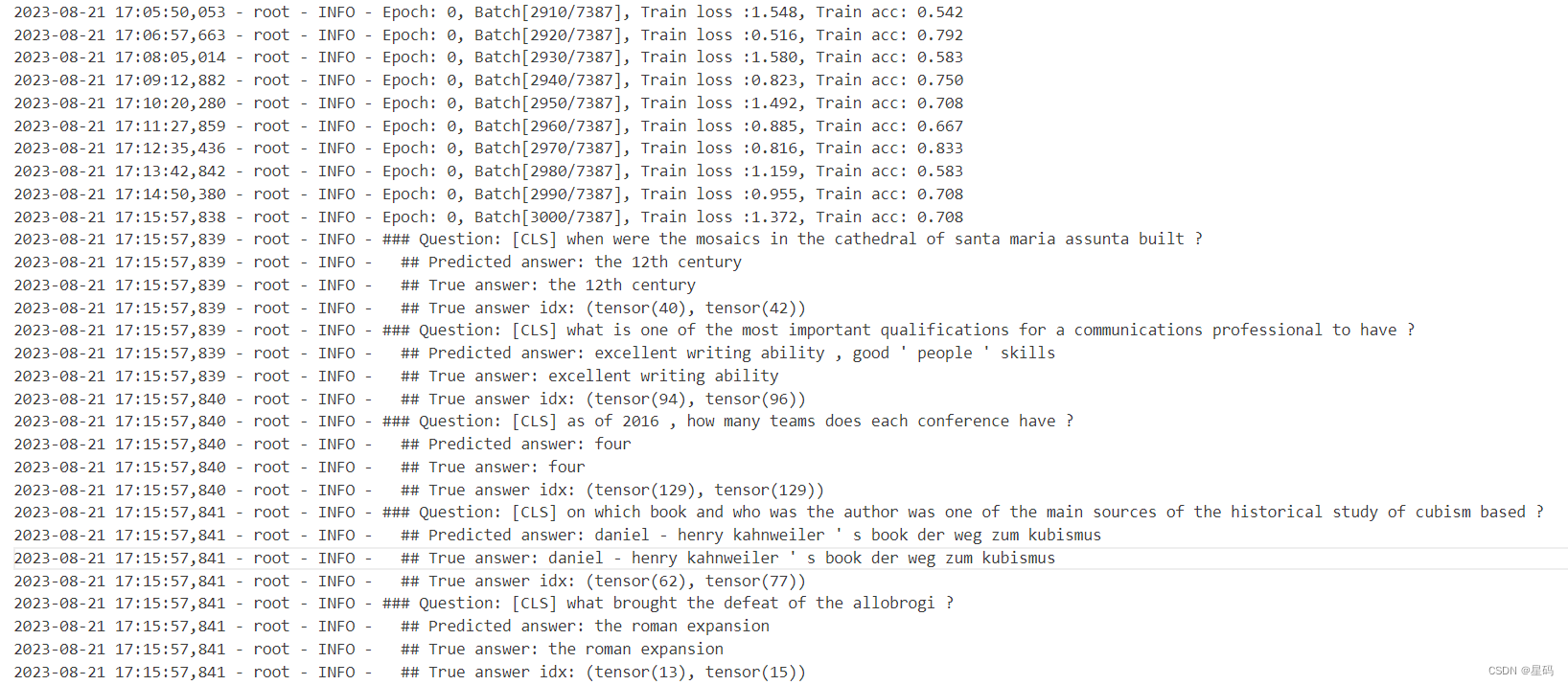
参考资料
基于BERT预训练模型的SQuAD问答任务:https://www.ylkz.life/deeplearning/p10265968/

